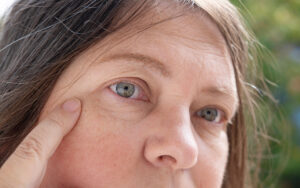Good eye health is crucial for a child’s development and overall well-being. Pediatric eye care is an essential part of ensuring that children are able to see clearly and correctly, as vision problems can affect their learning, social interactions, and physical abilities. This blog post provides comprehensive insights from pediatric ophthalmologists and the American Academy of Ophthalmology on how to maintain and improve children’s eye health.
1. Understanding Pediatric Eye Health
- Importance of Early Eye Exams: Regular eye exams are vital for early detection and treatment of common pediatric eye conditions such as amblyopia (lazy eye), strabismus (crossed eyes), and refractive errors (necessity for glasses). The American Academy of Ophthalmology recommends that children have their first comprehensive eye exam at 6 months of age, followed by another at age 3, and just before they start school.
- Common Eye Problems in Children: Besides refractive errors, children can face other serious eye health issues like cataracts and congenital glaucoma. Early diagnosis and intervention are key to managing these conditions effectively.
2. Protective Measures and Safety
- Shielding Eyes from Harm: Children are naturally active, making them prone to eye injuries, especially during play or sports. Protective eyewear, such as polycarbonate lenses, can shield a child’s eyes from potential harm. During summer holidays, sunglasses that block UV rays are essential to protect their sensitive eyes from sun damage.
- Preventing Vision Problems: Minimizing screen time and encouraging outdoor play can help maintain a child’s eye health. Regular breaks during reading or screen viewing can prevent eye strain and support better vision health.
3. Advances in Pediatric Ophthalmology
- Innovative Treatments and Technologies: The field of pediatric ophthalmology is continually advancing with new technologies and treatment methods, including the use of artificial intelligence for diagnosing complex eye conditions. Strabismus surgery and treatments for amblyopia have also seen significant improvements, enhancing outcomes for pediatric patients.
- Role of a Pediatric Ophthalmologist: Pediatric ophthalmologists specialize in both the medical and surgical management of visual function. They play a critical role in the treatment of both common and rare pediatric eye conditions.
Conclusion
Caring for a child’s eyes is an investment in their future. With the right preventive measures and timely medical intervention, most vision problems in children can be effectively managed or completely resolved. Parents should ensure regular pediatric eye exams and consult a specialist when any eye-related symptoms occur. For more detailed articles on eye care and expert advice, be sure to check our blog regularly. Your child’s vision is precious – let’s protect it together.
FAQs
How often should my child see a pediatric eye doctor?
Children should have their first eye exam at 6 months, another at 3 years, and before starting school. After that, you should schedule routine checkups every two years or as your pediatric ophthalmologist advises.
What are the signs that my child may have a vision problem?
Common signs include squinting, sitting too close to the television, difficulty reading, eye rubbing, or complaining of headaches and blurred vision. If you notice any of these behaviors, it’s important to make an appointment with a pediatric eye doctor.
Can vision problems be corrected in children?
Many childhood vision problems, such as lazy eye or refractive errors, can be corrected with glasses, contact lenses, or surgery if necessary. Early detection and treatment are crucial for effective results.




